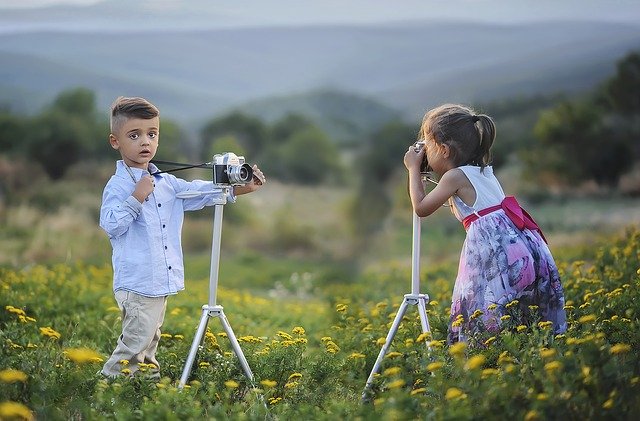Why teach photography to kids
(Hint: photography is fun, creative and practical!)
By Scott Umstattd
There was a time when photography was cumbersome, burdensome, expensive, rare, complicated and even dangerous. That was then.
Now we've all got a camera (or two). And you probably have one within 6 feet of you right now. And that means you can teach photography to kids.
And that's a big deal. Photography is a way that we all communicate with a daily basis. You can call someone. Text them. Send them a picture. Or my favorite, send a GIF.
You can look at a picture (listening) and you can take a picture and send it (have a thought and share it).
teach photography to kids
Photography is an important tool in our communications tool chest. We look at pictures online and in our social media feeds.
Photos are used by news agencies to show what us what is happening around the world.
Photos are used to sell us cars, makeup, medicine, soap, socks, and everything else you can think of. Photos are part of the fabric of our lives.
Let's jump into it. Here's the case for why you should (and can) teach photography to kids.
Photography is Easy and simple
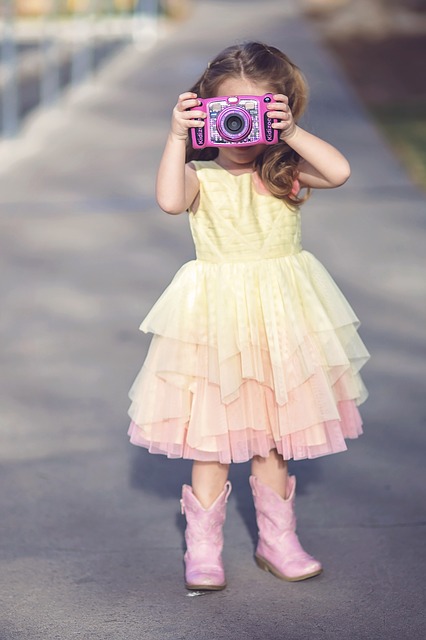
Photography is an incredibly simple and easy process. Our cameras literally fit in our pockets and can be "made ready" in a matter of seconds.
Compare that to the first cameras that people had to go to because they were too big to be moved around or the damage done from using too much magnesium flash powder.
Having said that (photography is easy), photography can also be very complicated and challenging. It really depends on how each photographer pushes herself.
Most everyone knows how to cook some food. Some people cook because they have to eat. Others make art with what they create in the kitchen if the desire is there.
Everyone should know how to take pictures. Like cooking, it's a life skill.
It doesn't take much to teach photography to kids. And with just a little guidance you can expose photography to your kids to see if the desire for more is there.
Photography is practically free
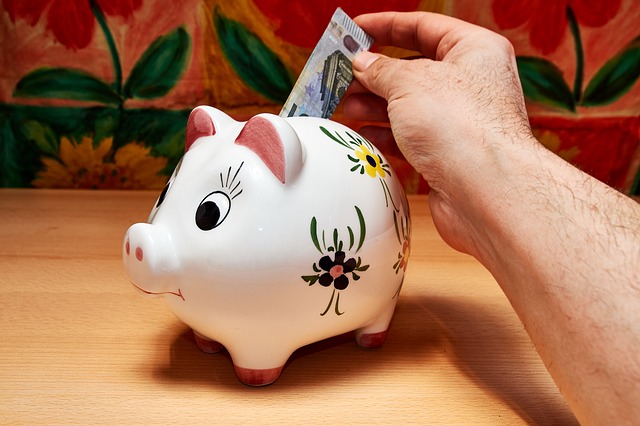
If you own a smartphone, you already have a camera. Taking pictures and showing them to others costs only the time taken to click the shutter and hit the share button.
You can make mistakes all day long and not lose one bit of inventory or have to replenish supplies. Simply delete the mistakes (after you have learned something from them) and start over fresh.
If you are selling something online, a good (or great!) photo will help you sell it faster and for more money.
If you teach photography to kids it's almost like putting money back into the piggy bank.
Photography is Incredibly Mobile
To repeat, you can fit a very good camera into your pocket. Because of its portability, photography can be brought into practically every aspect of life.
But that's been true for a while. Even the larger DSLR cameras out today are small enough to put in a backpack to be taken pretty much anywhere.
What has changed is the smartphone. Almost everyone has a smartphone and by default has a camera as well. Because there are more cameras in our hands (or pockets) many of life's events that would have never been photographed are being photographed and shared with friends and family.
It's not so much the portability of cameras that has changed. The ability to be anywhere and show other people your photos instantly is really how photography has become more mobile. It's the end result, the photo, that is incredibly mobile.
Photography is immediate
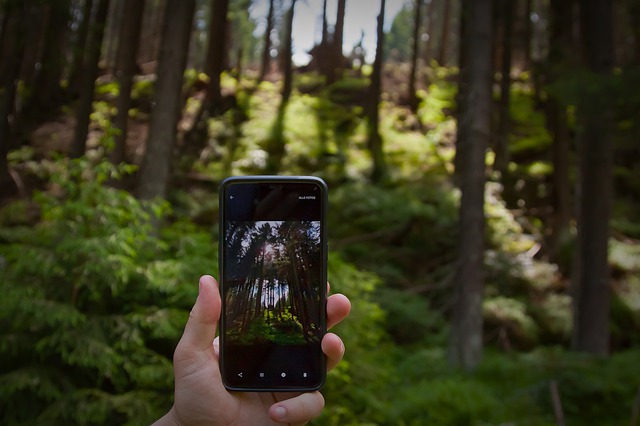
Photos today aren't recorded onto film or big metal plates.
Today, a sensor smaller than a thumb tack records the light that comes through the lens. As a result, you don't have to take your film or your big metal plate to a separate facility to be processed and printed in order to show others the results.
If you see something you like you can take, process, and show others your photo in under 30 seconds.
If you are trying to better understand photography (if you are trying to learn) you can see the fruits of your labor immediately and, if you're not satisfied, try another approach to see how the results change.
Everything about photography is immediate. If you have a short attention span, taking photos may be for you because you won't have time to wait around and get bored.
Photography is Part of our culture
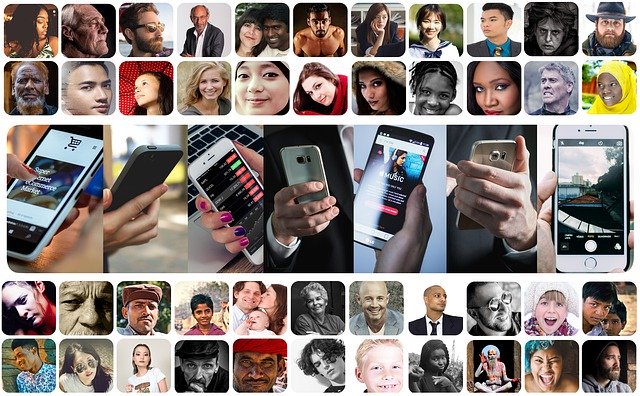
While producing a photograph may have taken a lot of organization and time 100 or even 20 years ago, viewing and appreciating (or not appreciating) photography has always been an easy thing to do.
A painting may have taken years to complete. However, looking at the painting takes a matter of moments to complete.
We have always liked looking back at ourselves and photography created a way to show a "real" version of events rather than one imagined in a painting. The reality that photography offers is an uncompromised look back at ourselves. And, just as a mirror shows us our good and bad side the camera does the same.
Take a look around you today. How many photographs will you see? From magazine covers to social media thumbnails to photos of people in the street or playing games, photography gives us a unique way to understand ourselves and others.
Photography, like writing, is a way to communicate and communication is part of any culture. All the more reason to teach photography to kids.
Photography is creative
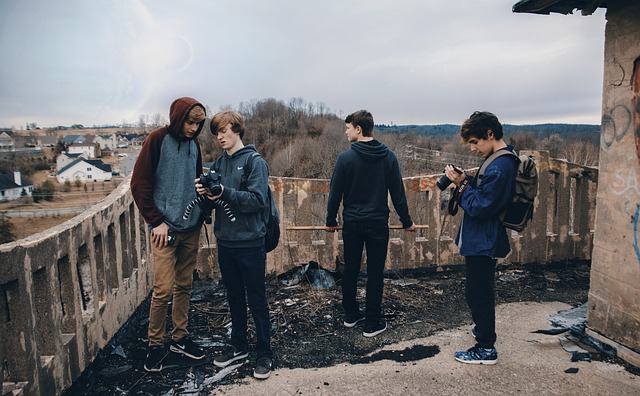
How we speak and what we say is important if we want people to like or appreciate what we are saying.
How we take (and make) photographs is one way an individual can communicate if words cannot be found or if they aren't needed.
Simple decisions like deciding to take a photo from knee-height or holding the camera above the head can have a dramatic affect on what is being conveyed in a photograph.
Some writers may be known for their wit, word-play, character development, settings, or for their prowess in other literary categories.
The same is true for photographers. After a while, you will develop a style. Unless you are conscious of what you are doing you may create an unintentional style. But if you understand the basic foundations (a few rules) you can use them as you see fit to create and develop your own communication style or method that people will come to appreciate as being uniquely yours.
Teach photography to your kids so they can develop their own creative style.
Photography is Practical

Not every photograph has to be a work of art of change how the world sees itself. Every book is not a novel. Some books help you cook better meals. Some books inform you how to set up the VCR.
If something is broken on your car you can take a picture of it to send to the mechanic for his input.
In school, students can take photos throughout field trips or even vacations to help them share their experience. Seeing photos does wonders to add validity and interest to written stories.
The practical nature of photography alone requires that everyone know the basics of photography because at some point everyone takes a photo.
Don't be the guy that has to ask his neighbor to come over and cook an egg for you. Everyone should know how to cook an egg and any parent can teach photography to kids.
TEACHING Photography through Light and composition

Just like cooking an egg. Photography is a pretty simple process. And, unlike some other classes, teaching photography doesn't require an iron fist.
In fact, a hands-off approach is probably the best way to teach photography to kids.
You don't have to be a master chef to teach someone how to cook and egg and you don't have to be a professional photographer to teach someone how to take pictures the right way.
Picture Power has created a set of six Photography Lesson Plans designed to help the novice photographer properly introduce photography to students by guiding the teacher and the student through the important roles LIGHT and COMPOSITION play in photography (no matter what camera is being used).
Your kids need to know how to take photos the right way and you can teach them how to do it. Check out Picture Power's Photography Lesson Plans and get started teaching photography today.
